You can sort the documents in the resource library using the filters below. Filters can be used singly or in combination. You can reset the filters at anytime using the "Reset" button. The search function at the top of the page is also available. If you would like to submit a publication to the resource center, please send it to childrenandaids@unicef.org
| Document | Download | Description | Year | |
|---|---|---|---|---|
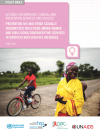
|
Prevention HIV and STIs among women and girls using contraceptive services | This programmatic brief explores how to expand HIV and STI prevention and contraceptive method options in contraceptive services and, thus, to reduce HIV and STI incidence among adolescent girls and women. |
2020 | |
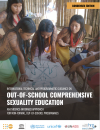
|
Out of School Comprehensive Sexuality Education | International technical and programmatic guidance on out of school comprehensive sexuality education evidence-informed approach for non-formal, out-of-school programmes. |
2020 | |
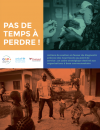
|
Cadre Stratégique | Ce cadre porte sur le diagnostic précoce du nourrisson (EID). Qu’est-ce que cela signifie ? |
2020 | |
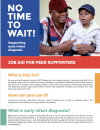
|
Job Aid Fact Sheet - No Time to Wait! | Do you work with people living with HIV? Maybe you run a support group for women living with HIV or antenatal classes? Do you hold community meetings or visit families affected by HIV in their homes? |
2020 | |
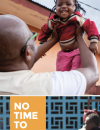
|
Caregivers Posters - No Time to Wait! | Three printable posters focusing on different aspects of the No Time to Wait! campaign. |
2020 | |

|
HIV Programming for Adolescent Girls and Young Women in High-HIV Burden Settings | This Technical Brief provides updated guidance to Global Fund applicants and implementers to leverage Global Fund financing that will further advance progress in scaling up effective programming for AGYW, in line with glob |
2020 | |
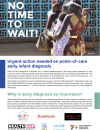
|
Advocates Brief for No Time to Wait! | Urgent action needed on point-of-care early infant diagnosis |
2020 | |
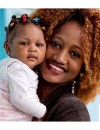
|
Going the 'last mile' to EMTCT , What will it take to achieve the EMTCT goals for children in Africa? , A road map for ending the HIV epidemic in children , Feuille de route pour l’éradication de l’épidémie de VIH chez les enfants | The 'Last Mile' road map draws on the latest scientific research and programmatic evidence to describe and recommend strategies to achieve the elimination of mother-to-child transmission of HIV (EMTCT). |
2019 | |
| |
Integration of HIV into Cyclone Idai response in Malawi, Mozambique and Zimbabwe | This multi-country case study from the UNICEF Eastern and Southern Africa Regional Office highlights important HIV-specific interventions that were integrated into the emergency cyclone response in Malawi, Mozambique and Z |
2020 | |
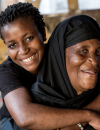
|
Framework: Improving HIV Service Delivery for Infants, Children and Adolescents (WEB) , Framework: Improving HIV Service Delivery for Infants, Children and Adolescents (PRINT) , Worksheet: Assessing the situation | The paediatric service delivery framework presents strategies to address bottlenecks across the continuum of care for each population: infants, children and adolescents. |
2019 | |
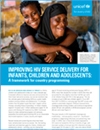
|
Brief: Improving HIV Service Delivery for Infants Children and Adolescents | In June 2019, UNICEF convened a group of about 40 global experts from 24 organizations and institutions to advance the collective thinking on paediatric HIV service delivery. |
2019 | |
| |
Q3 2019 Newsletter - Research Summary | Download a selection of abstracts related to children, HIV and AIDS published in peer-reviewed journals between July and October 2019. |
2019 | |
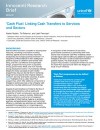
|
Research brief: ‘Cash Plus’ - Linking cash transfers to services and sectors | This research brief defines 'cash plus' interventions, the menu of 'plus' components, and summarizes the evidence on their broad-ranging impacts. |
2019 | |
| |
ICASA 2019 Roadmap: 'Three Frees' sessions |
|
2019 | |
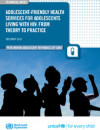
|
Adolescent-friendly health services for adolescents living with HIV: from theory to practice | This publication primarily seeks to define and clarify the key elements of adolescent-friendly health services to help ensure that adolescents living with HIV receive appropriate and effective treatment, summarize existing |
2019 | |
| |
Global snapshot , Sub-Saharan Africa snapshot , Eastern and Southern Africa snapshot , West and Central Africa snapshot | Global and regional epidemiological and response snapshots based on the UNAIDS 2019 HIV estimates. |
2019 | |
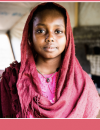
|
2019 | |||
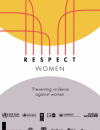
|
2019 | |||

|
Empower Young Women and Adolescent Girls | 2019 | ||
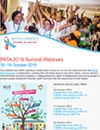
|
Live Webinars Invite for PATA Summit | 2019 |